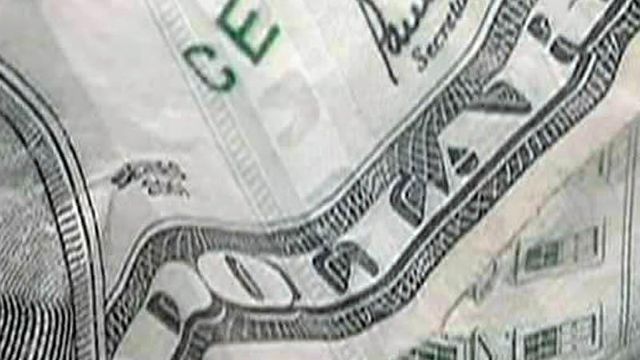Obama announces help for student loan borrowers
President Barack Obama recalled his struggles with student loan debt as he unveiled a plan Wednesday that could give millions of young people some relief on their payments.
Posted — UpdatedSpeaking at the University of Colorado Denver, Obama said that he and his wife, Michelle, together owed more than $120,000 in law school debt that took nearly a decade to pay off. He said that sometimes he'd have to make monthly payments to multiple lenders, and the debt meant they were not only paying for their own degrees but saving for their daughters' college funds simultaneously.
"I've been in your shoes. We did not come from a wealthy family," Obama said to cheers.
Obama said it's never been more important to get a college education, but it's also never been more expensive. Obama said his plan will help not just individuals, but the nation, because graduates will have more money to spend on things like buying homes.
"Our economy needs it right now and your future could use a boost right now," Obama said.
Obama's plan will accelerate a measure passed by Congress that reduces the maximum required payment on student loans from 15 percent of discretionary income annually to 10 percent. He will put it into effect in 2012, instead of 2014. In addition, the White House says the remaining debt would be forgiven after 20 years, instead of 25. About 1.6 million borrowers could be affected.
He will also allow borrowers who have a loan from the Federal Family Education Loan Program and a direct loan from the government to consolidate them into one. The consolidated loan would carry an interest rate of up to a half percentage point less than before. This could affect 5.8 million borrowers.
Student loans are the No. 2 source of household debt. The president's announcement came on the same day as a new report on tuition costs from the College Board. It showed that average in-state tuition and fees at four-year public colleges rose $631 this fall, or 8.3 percent, compared with a year ago. Nationally, the cost of a full credit load has passed $8,000, an all-time high.
Likewise, the cost of attending a community college rose about 8 percent this year, to about $3,000. The tuition increases are twice the rate of inflation.
Student loan debt is a common concern voiced by Occupy Wall Street protesters. Obama's plan could help him shore up re-election support among young voters, an important voting bloc in his 2008 election. But, it might not ease all their fears.
Alexander Putman, a graduate student at North Carolina State University, said he will have to start paying back about $15,000 after he earns his Ph.D. next year.
"It's definitely concerning. You don't want that to carry on much later in life," Putman said.
Sophomore Jordan Reisenauer said she is likewise concerned about how she's going to pay back $24,000 she borrowed to get a psychology degree.
"I didn't really have a choice. It was kind of like, here I go," Reisenauer said.
Obama's changes also include a new program, "Know Before You Owe," aimed at helping students understand how their college loans will affect their lives – before they sign on that dotted line.
The average student debt at N.C. State is about $20,000, said Krista Domnick, senior associate director of scholarships and financial aid. Many students don't think about what their payments will be until they get that first bill, she said.
"They have to make choices about, do I have to work more than one job? Is the career I'm focused on going to provide the income I need to repay these debts?," Domnick said. "(They also face) choices about where they may live, how soon they may start a family or purchase a home."
Consolidating loan payments and paying them off over a longer period might end up costing people more, she said, but will help in the short term.
"(The move), in effect, drops your monthly payment, which is what most students need – that immediate relief," she said. "What they need to focus on is the additional interest they'll be paying over time."
Reisenauer said a longer payment schedule fits the needs of most students.
"Maybe when I get done with grad school, I can buy a house, be more independent," she said. "I mean, it'll give me more debt in the long run, but it'll let me set up my life the way I want it when I get done with school."
The White House said the changes will carry no additional costs to taxpayers.
Last year, Congress passed a law that lowered the repayment cap and moved student loans to direct lending by eliminating banks as the middlemen. Before that, borrowers could get loans directly from the government or from the Federal Family Education Loan Program; the latter were issued by private lenders but basically insured by the government. The law was passed along with the health care overhaul with the anticipation that it could save about $60 billion over a decade.
The change in the law was opposed by many Republicans. At a hearing Tuesday, Rep. Virginia Foxx, R-N.C., who chairs a subcommittee with oversight over higher education, said it had resulted in poorer customer service for borrowers. Senate Republicans issued a news release with a compilation of headlines that showed thousands of workers in student lending, including those from Sallie Mae Inc., had been laid off because of the change.
Today, there are 23 million borrowers with $490 billion in loans under the Federal Family Education Loan Program. Last year, the Education Department made $102.2 billion in direct loans to 11.5 million recipients.
• Credits
Copyright 2024 by WRAL.com and the Associated Press. All rights reserved. This material may not be published, broadcast, rewritten or redistributed.





